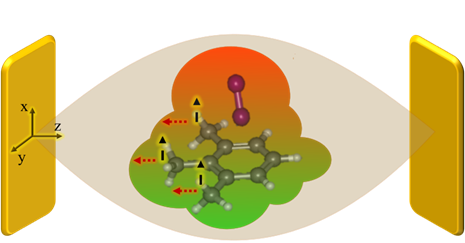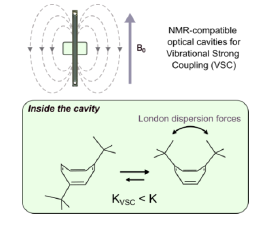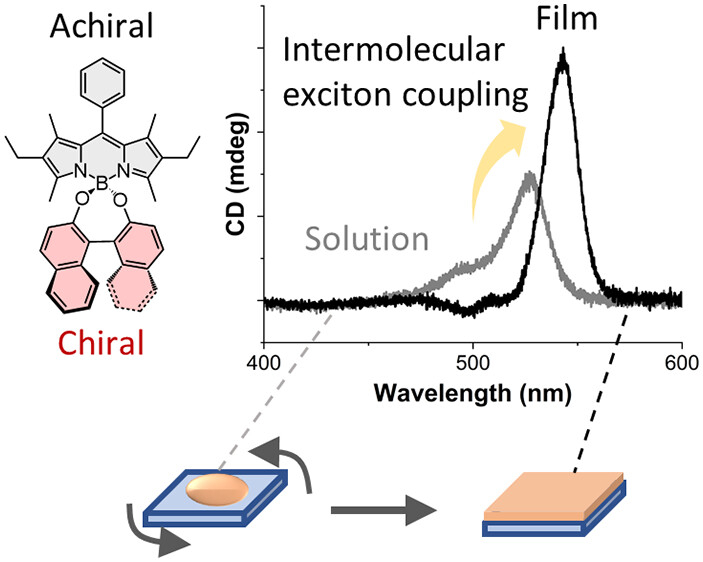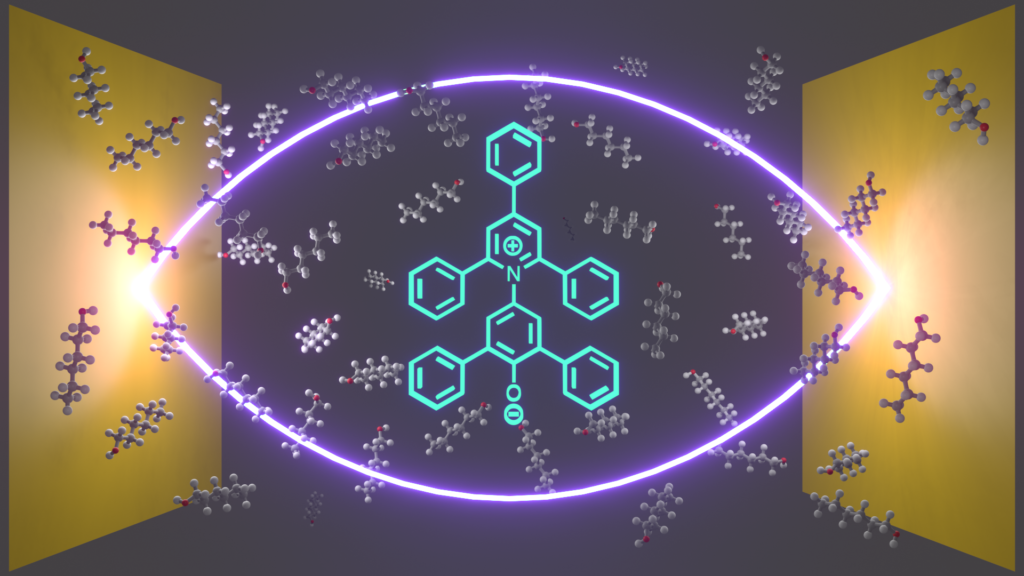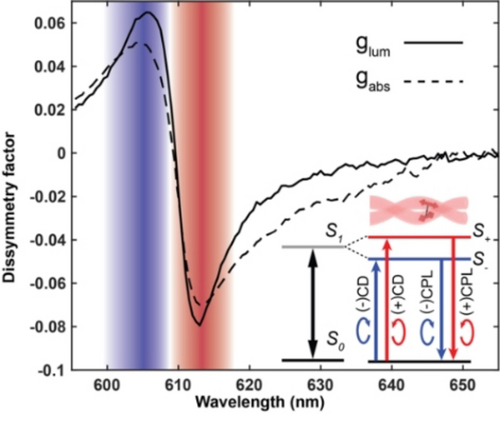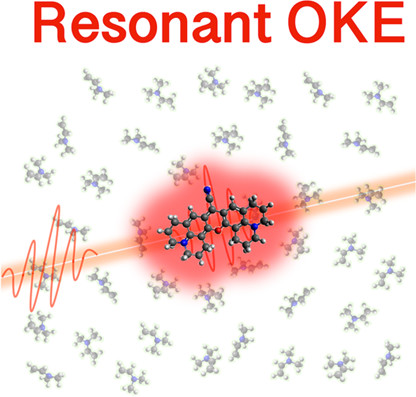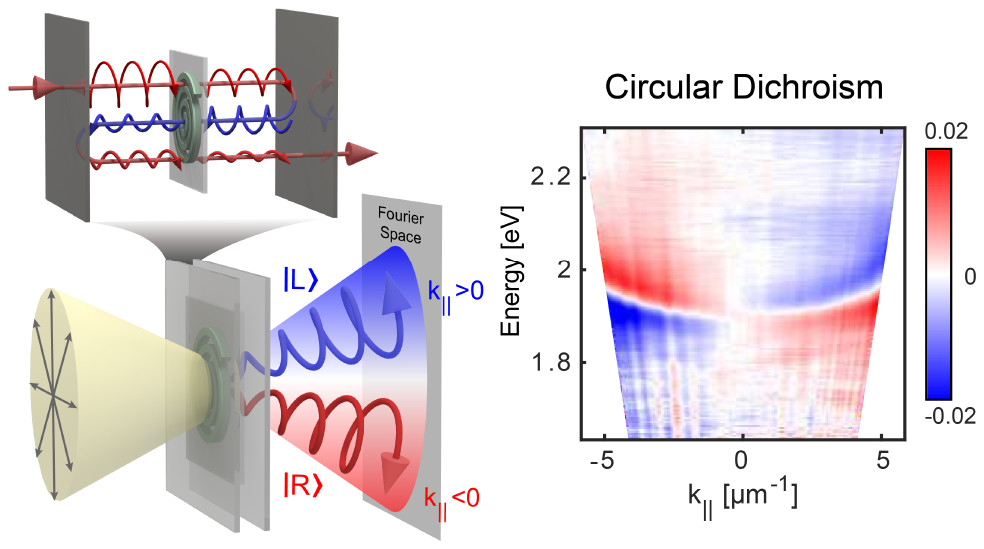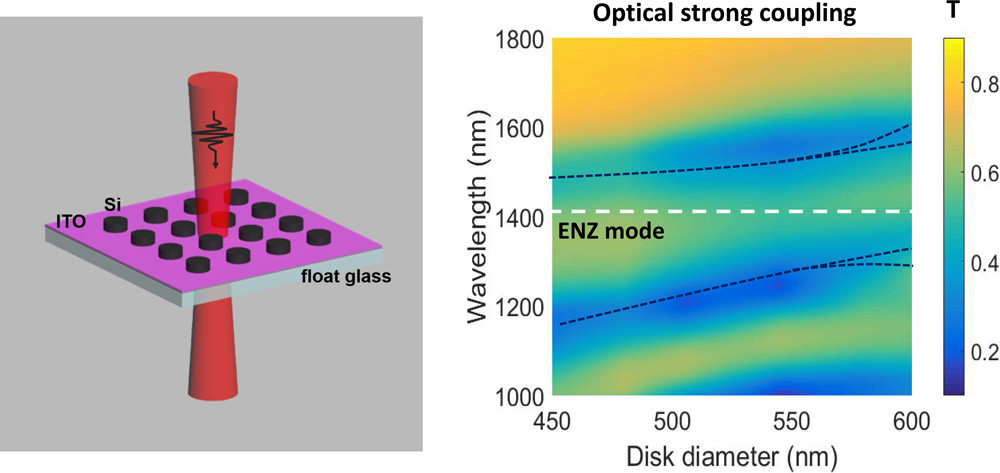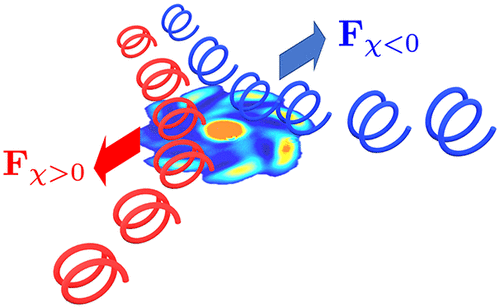Our latest research paper, “A Phenomenological Symmetry Rule for Chemical Reactivity under Vibrational Strong Coupling” has just been accepted in Angewandte Chemie and published online. We study the equilibrium constants of different charge transfer complexes by comparing isomers of trimethyl benzene having different symmetries (thus belonging to different point groups) with various acceptors. Our results show that depending on the vibrational band that is strongly coupled, the product formation is either favored or not. From this arises a general symmetry rule that can be extended to predict the outcome of chemical reactivity under VSC.
Category Archives: Publications
April fool ?
We are delighted to announce, that after a few years of hard experimental work, our paper on the influence of strong coupling on the critical temperature of a superconductor has been eventually published, in a special issue of the Journal of Chemical Physics dealing with “Polaritonics for next generation materials”. And this is not an April fool despite its publication date, the first of April… This paper summarizes our attempts to modify the critical temperature of a superconductor, the Rb3C60, by using the cooperative coupling between one of its vibrational mode with a strong vibration of a polymer, and surface plasmons mode. Despite the numerous experimental issues due to the complexity of this system and of those measurements, we observed that for most of the samples we prepared, the Tc of the Rb3C60 was increasing from 30K to 45K. Our theorists colleagues have developed a simple model based on an enhancement of the electron-phonon coupling to explain those results. We thank all the collaborators who took part to the success of this project. Congratulations to all !
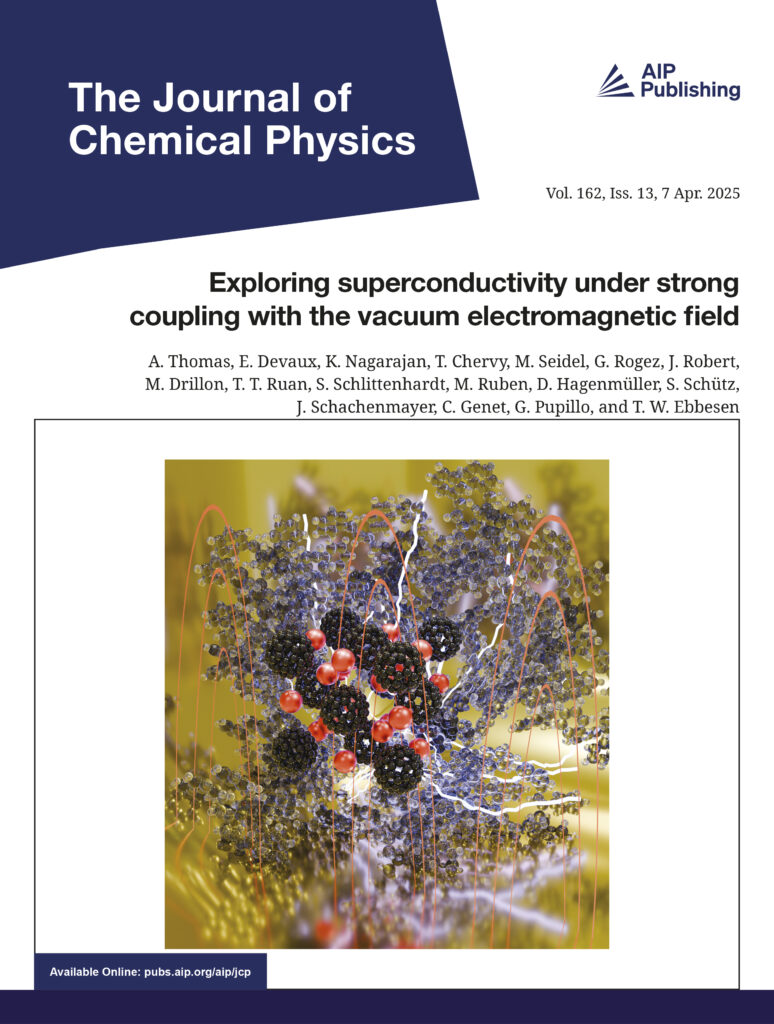 Source : The Journal of Chemical Physics
Source : The Journal of Chemical Physics
Spring publication
Our latest paper, presenting results obtained in collaboration with two other groups from ISIS (Joseph Moran‘s group and Giulio Raggazon‘s group) has just been accepted in Angewandte Chemie. Fabry-Perot optical cavities were developed to characterize Vibrational Strong Coupling (VSC) by Nuclear Magnetic Resonance (NMR) spectroscopy and we demonstrate that the London dispersion-driven conformational equilibrium of a molecular balance is altered when the C–H stretching vibration is strongly coupled to the cavity. Unexpectedly, VSC does not substantially affect molecular electron density distributions which has profound implications for the possible mechanisms at play in polaritonic chemistry.
Refreshment
We refreshed our Publications page with some new papers, already online or deposited on arXiv. You will learn that stochastic resetting, implemented in a time-dependent optical trapping potential, behaves as a Maxwell demon, find a scattering formalism framework for analyzing spin-momentum locking in plasmonic metasurfaces, read that a bottom-up approach is possible for fabricating chiral mirrors, discover how exciton coupling induces a large chiroptical response in an organic film and understand how to emulate temperature protocols and to estimate their entropic cost using an optically trapped microsphere. Congratulations to all authors and happy reading !
Solvent Polarity under VSC
We are pleased to announce the acceptance in JACS of a new paper presenting results obtained in collaboration with Joseph Moran’s group. By coupling some vibrational bands of alcoholic solvents with cavity modes, we showed that their polarity is influenced, by measuring the solvatochromic response of Reichardt’s dye. The shift in the absorption spectrum of the dye depends on the length of the solvents alkyl chain, indicating that dispersion forces are impacted by strong coupling and may be critical to understand how vibrational strong coupling influences chemical reactivity. Congratulations to all !
Food for mind
We just updated the Publications page of the website with a few papers published since the beginning of the year. Au menu, we have chiral Frenkel excitons yielding intense circular dichroism and circular polarization luminescence as starter. The main dish is a study about the optimization of entropic costs during cooling or heating protocols applied to an optically trapped microsphere. As dessert, we finally propose a scattering formulation clarifying how spin momentum locking emerges from a geometric phase metasurface. Congratulations to all people involved in those nice results !
Let’s rock solute
Our most recent publication appeared one week ago, in the “ASAP” section of Journal of Physical Chemistry Letters. In this work, we have developed a ROKE (resonant optical Kerr effect) spectroscopy setup to monitor the reorientational relaxation time of a solute molecule into a solvent, with a high accuracy and sensitivity. The key experimental factors were to tune the pump and the probe laser beams to the resonant wavelength of the solute, in order to amplify the signal, as well as the heterodyne detection, allowing to determine the relaxation time accurately. The accepted version can be downloaded from our publications page.
Seeds of 2D chirality grow 3D…
In a new publication in ACS Photonics, we show that optical spin orientations can be locked to intracavity propagation directions when a seed of planar (2D) chirality is present inside the cavity. This seed is given by inserting between the two metallic mirrors of a Fabry–Perot cavity a layer of polystyrene made 2D chiral under torsional shear stress. This planar chirality gives rise to an extrinsic source of three-dimensional chirality under oblique illumination that endows the cavities with enantiomorphic signatures measured experimentally and simulated with excellent agreement. The simplicity of this scheme is particularly promising in the context of chiral cavity QED and polaritonic asymmetric chemistry, driven by chiral polaritonic states.
A nano letter but a large optical non linearity !
Another paper, resulting from the collaboration between our group and Institute of Electro-Optical Engineering from National Taiwan Normal University, has been published in Nano Letters. Strong coupling provides a powerful way to modify the nonlinear optical properties of materials but the coupling strength is restricted by a weak-field confinement in cavities, which limits the enhancement of the optical nonlinearity. Here, we investigate a strong coupling between Mie resonant modes of high-index dielectric nanocavities and an epsilon-near-zero mode of an ultrathin indium tin oxide film and obtain an anticrossing splitting of 220 meV. In addition, static nonlinear optical measurements reveal a large enhancement in the intensity-independent effective optical nonlinear coefficients, reaching more than 3 orders of magnitude at the coupled resonance.
New publications
Just before he went back to India, the paper written by Sandeep Kulangara as first author has been accepted in Journal of Physical Chemistry Letters. The effects of cooperative vibrational strong coupling on the aggregation of two structural isomers of phenyleneethynylene was investigated and showed to lead to two different self-assembled structures, spheres and flakes, having distinct optical properties. These results confirm that VSC can be used to drive molecular assemblies and thereby provide a new tool for supramolecular chemistry.
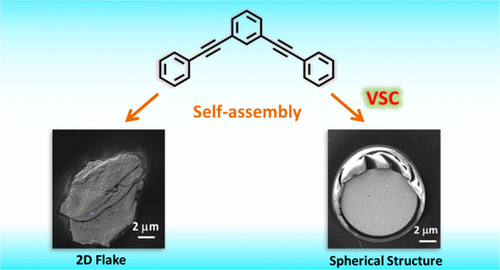 In addition, Cyriaque Genet just published a perspective on chiral light and chiral matter interactions in ACS Photonics. In this paper, he shows how chiral optical forces shed new light on chiral light−chiral matter interactions. The key advances selected are representative of the vitality of the current research activity and clearly point toward future designs for all-optical chiral separation strategies of high potential.
In addition, Cyriaque Genet just published a perspective on chiral light and chiral matter interactions in ACS Photonics. In this paper, he shows how chiral optical forces shed new light on chiral light−chiral matter interactions. The key advances selected are representative of the vitality of the current research activity and clearly point toward future designs for all-optical chiral separation strategies of high potential.

